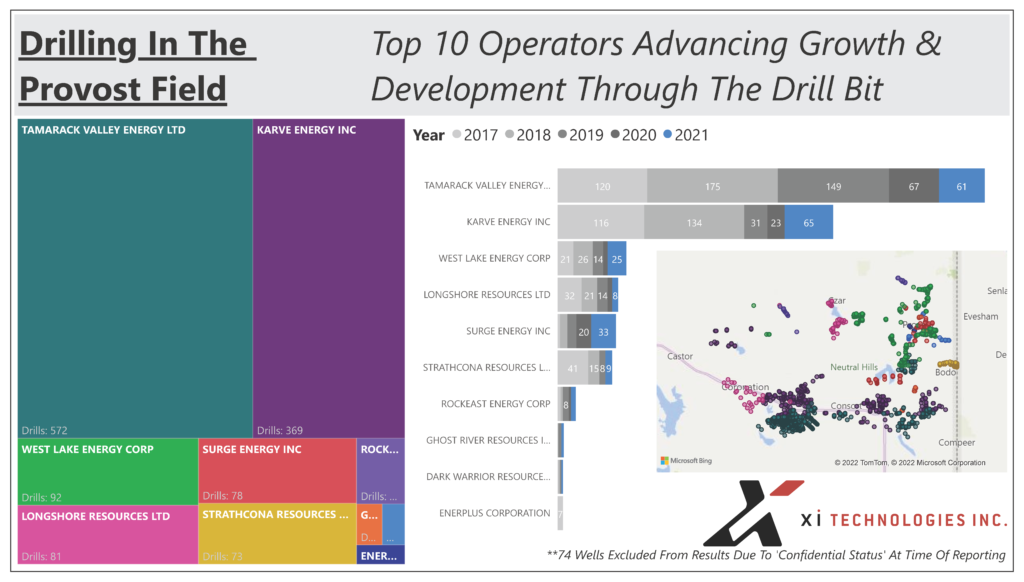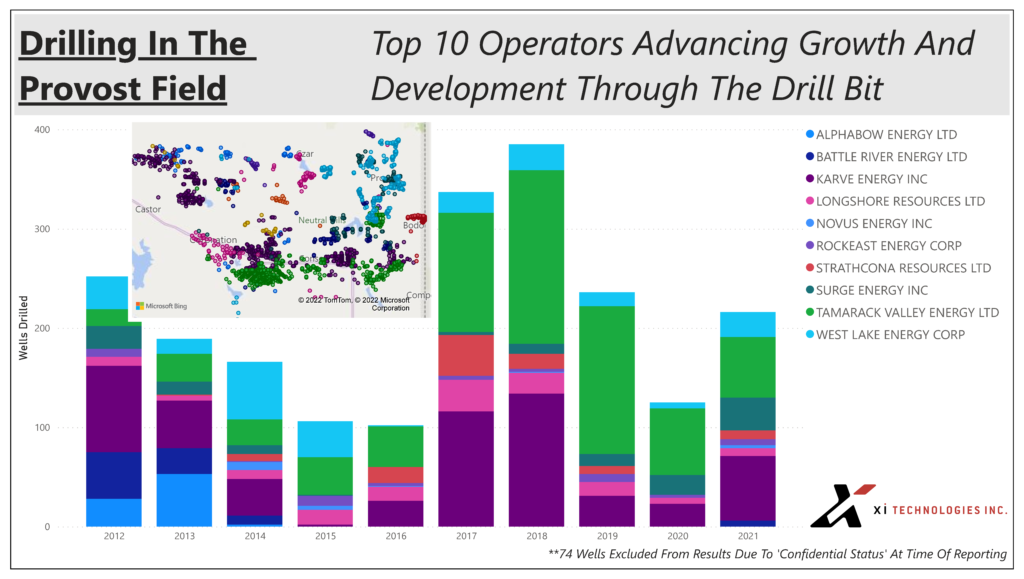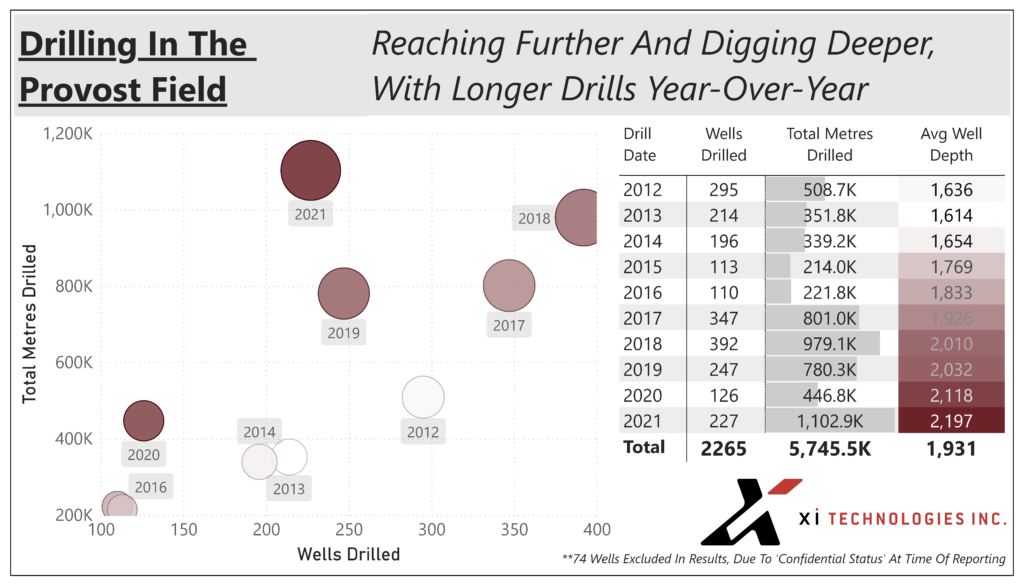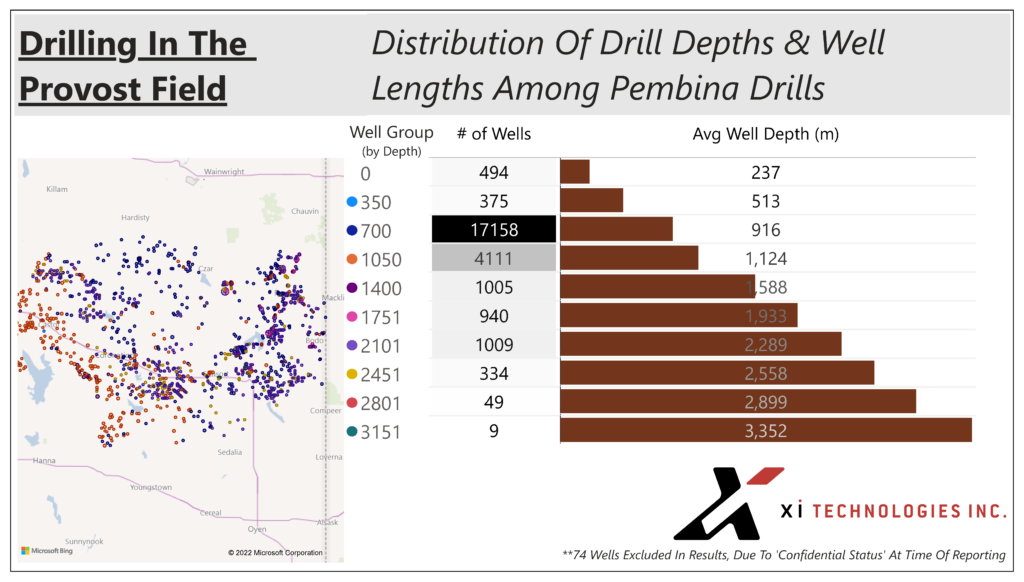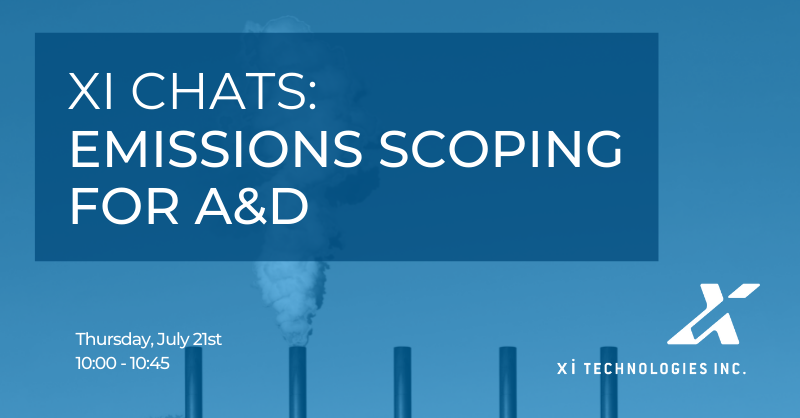Word to the Wise: Provost area drilling overview
July 12, 2022
Each week, XI Technologies scans its unique combination of enhanced industry data to provide trends and insights that have value for professionals doing business in the WCSB. If you’d like to receive our Wednesday Word to the Wise in your inbox, subscribe here.
Periodically at XI Technologies, we publish overviews of significant areas of interest in the Western Canadian Sedimentary Basin. This week, we’ll leverage XI Technologies’ drilling data to give an overview of drilling trends in the Provost gas field of Alberta. This follows a similar overviews we published for the Montney, Pembina, and Blueberry River.
The Provost gas field of east-central Alberta was discovered in 1946 by Imperial Oil Ltd with subsequent drilling determining the field outline and development drilling continuing to this day. The area covers parts of several formations, most notably Viking, Sparky, Dina, and Cummings (to see a full breakdown of formations in the area, view an interactive dashboard of this data).
Note: for the purposes of this article, we define the Provost field using the boundaries defined by the AER. This may differ from other internal company definitions. “Year” refers to Final Drill Date.
Most active operators
Tamarack Valley Energy and Karve Energy Inc are the dominant players in the area and have been for the past five years. West Lake Energy Corp, Longshore Resources Ltd, Surge Energy Corp, and Strathcona Resources Ltd join them with significant presences.
Looking further back in the history of this play, we see much of the same, but with a few other noteworthy findings.
2017-2018 were peak years in the field, after two slow drilling years previous. 2020 was a down year as it was everywhere, but 2021 signaled a bounce-back that we can expect to continue in 2022.
Trends in wells drilled and well depths over time
Let’s look deeper at information that tells us more about the drills themselves. 2021 marked not only an increase in wells drilled, it also marked a year of the most metres drilled in the past ten years, as average well depth has increased every year.
While metres drilled is increased, the majority of wells still average a well depth between 916-1124 metres.
To learn more about how XI’s OffsetAnalyst software can help you improve drilling research and performance, contact XI Technologies.
Next week, we’ll look at the Provost area from a perspective of ownership, including a look at liability and emissions data. We’ll be hosting an information session Emissions data for A&D scoping on Thursday, July 21st, click here for more information.
